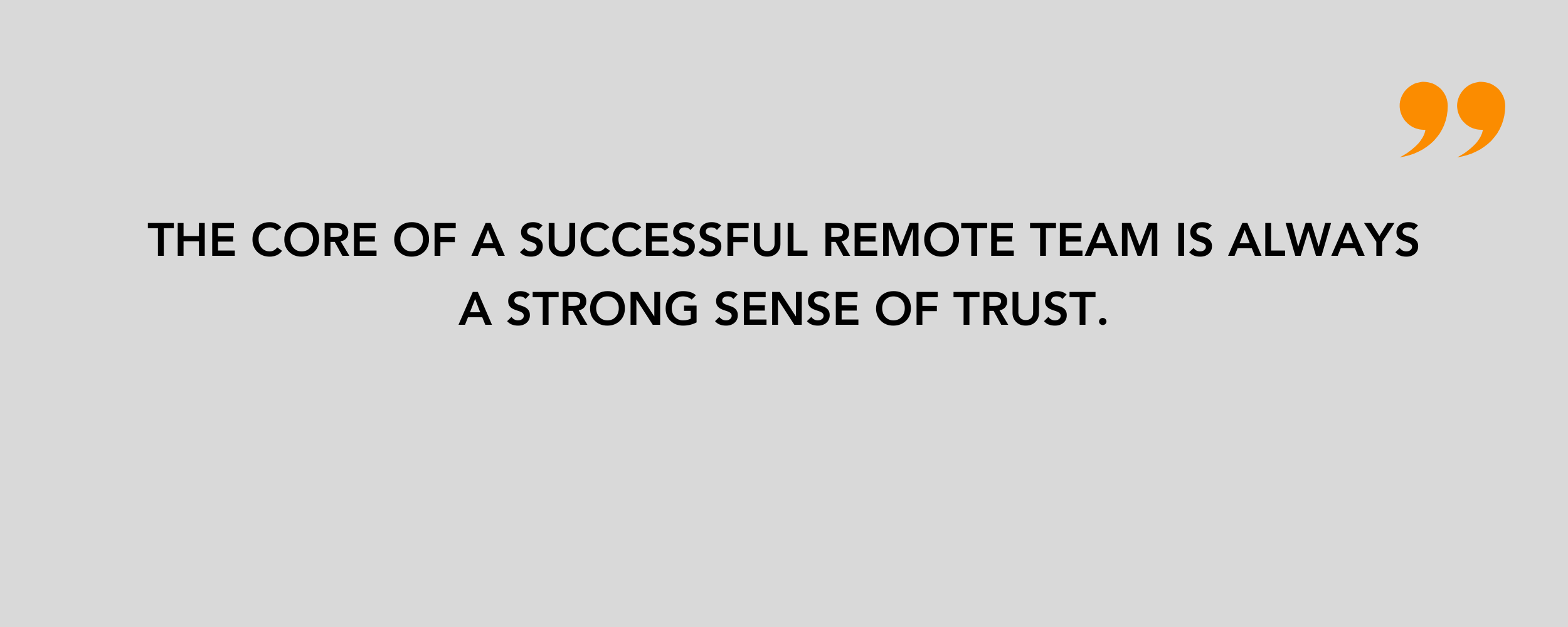
I recently had a coaching conversation with a client who is leading a global team. Her team is spread across continents and cultures. She loves the diversity and dynamics of this team but finds it challenging to increase trust with the team.
This is a very typical challenge many leaders in global organizations face these days.
According to Gallup, the remote workforce is growing with more than 43% of U.S. employees working remotely at least some of the time.
Gallup researchers also found that this trend is not only progressing across virtually all industries but also employees who spend three to four days a week working offsite tend to report higher “engagement” in their jobs.
However, leading a remote team tends to be more disorienting, time-consuming, and complex. At the core of a successful remote team is always a strong sense of trust. In fact, just like my client noticed as her personal challenge, I believe that trust is the crux of it all.
This is why I decided to pull together the key elements to be aware of to build trust in remote teams and sustain a highly effective, productive and successful group.
1. Dependability
If team members (including yourself) are dependable, everyone can anticipate how people will perform which encourages trust that everyone on the team will meet deadlines and deliver.
2. Consistency
Be consistent. All team members are treated with respect, workflows are consistently applied, and protocols and principles are applicable to everyone whether they work remotely or not.
3. Congruence
Say what you mean and do what you say you are going to do. Keep your promises. This may sound obvious, but keeping your word is absolutely essential to earn trust with other team members.
4. Accountability
Share positive progress from members publicly and give under-performing members individual coaching to help them get back on track. Team members must feel accountable for both their positive actions as well as mistakes and errors.
5. Transparency
Share information openly with the team. Work schedules, project progress, and task status should be available to all members at any time, no matter their location. Shared folders, collaborative documents, project management apps, etc. play a key role in this.
6. Interpersonal relationships
Take time to socialize virtually. Virtual teams need to have a channel that replaces the social interactions in a physical environment.

A leader can encourage personal connections by encouraging team members to share more personal updates, from how they spent the weekend to the last time they laughed. Be inventive and invest time and energy in building that rapport: this is an investment that will lead to enduring relationships.
The virtual water-cooler can enable non-work communication to take place and relationships to be built based on common interests. The quality of the relationships between the team members can make the difference between goals being reached and goals being exceeded.
Conclusion
Virtual and remote working are trends that continue to increase, especially as organizations will have to compete over the best talent.
If you have remote employees on your team, carefully think about how to establish and maintain high levels of trust and how to create a collaborative and transparent work environment.
Contact me at simon@simonvetter.com to learn more about how to build a successful remote or virtual team.



